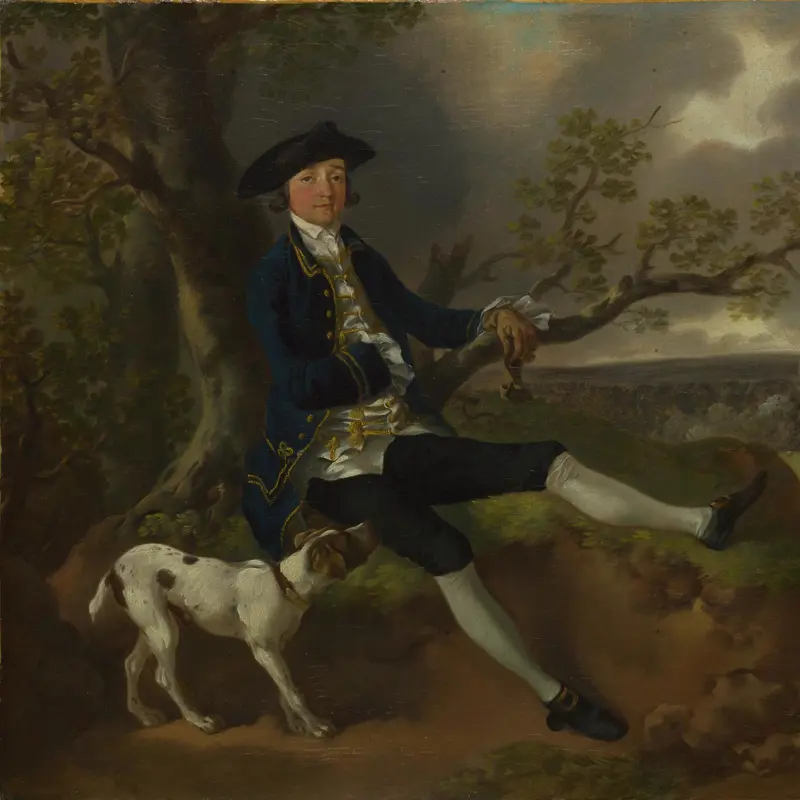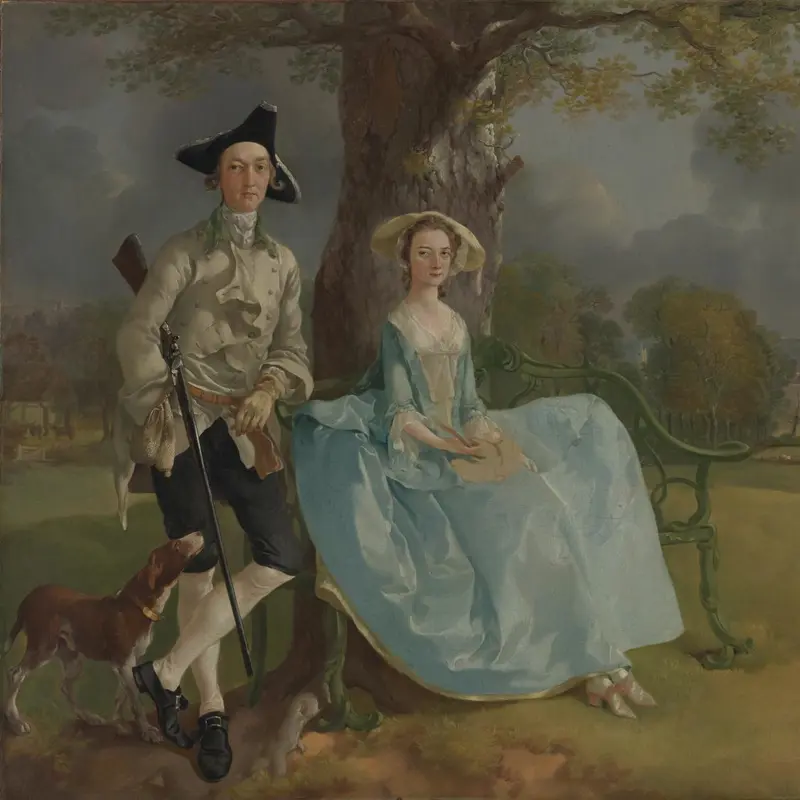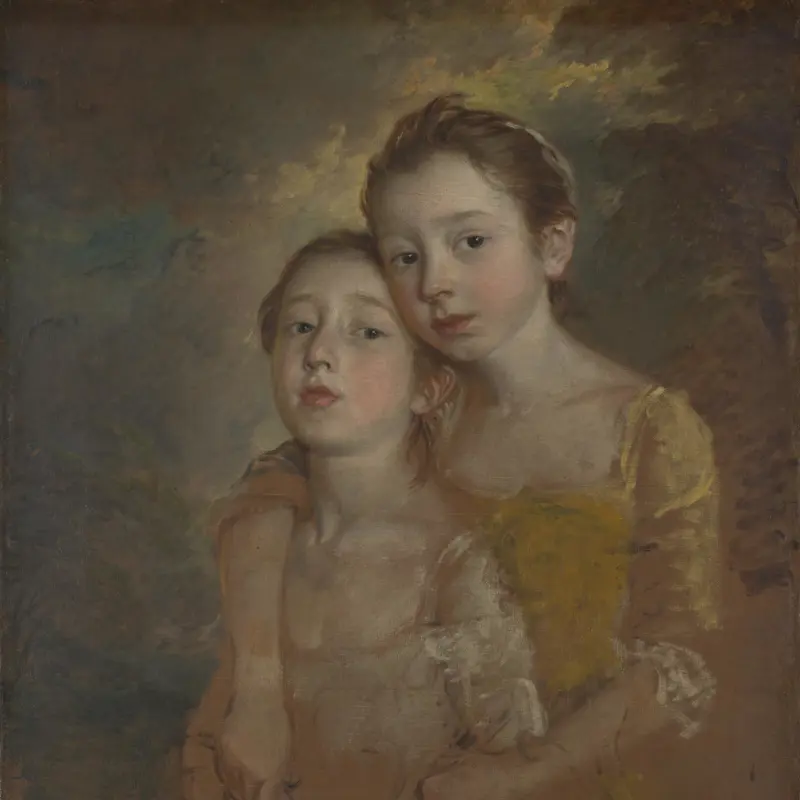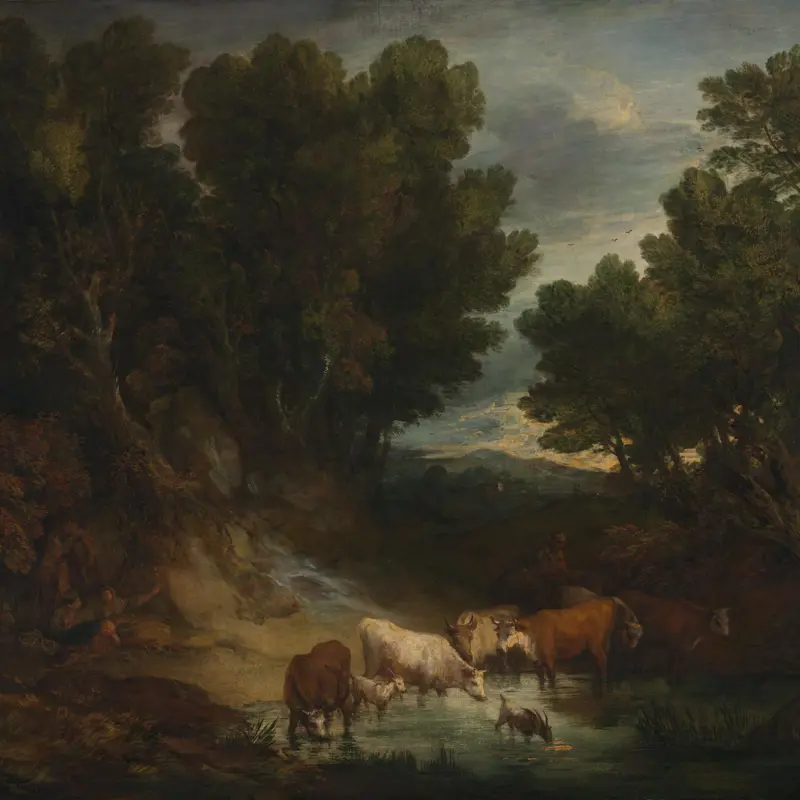Gainsborough was, with Reynolds (his main rival), the leading portrait painter in England in the later 18th century. The feathery brushwork of his mature work and rich sense of colour contribute to the enduring popularity of his portraits. Unlike Reynolds, he avoids references to Italian Renaissance art or the Antique, and shows his sitters in fashionable contemporary dress.
He was a founding member of the Royal Academy, though he later quarrelled with it over the hanging of his pictures. He became a favourite painter of George III and his family.
He was born in Sudbury, Suffolk, the son of a wool manufacturer. He trained in London, and set up in practice in Ipswich about 1752. In 1759 he moved to Bath, a fashionable spa town, attracting many clients for his portraits. He settled in London in 1774. His private inclination was for landscape and rustic scenes, and his amusing letters record his impatience with his clients' demands for portraits.
Thomas Gainsborough
This person is the subject of ongoing research. We have started by researching their relationship to the enslavement of people.
Slavery connections
Gainsborough painted The Byam Family, c.1762–66 (The Holburne Musuem, Bath: on long-term loan from the Andrew Brownsword Arts Foundation; inv. no. L2001.1). The family owed their wealth to a slave plantation in the West Indies. George Byam (UCL Department of History, ‘George Byam’, in UCL Department of History (ed.), Legacies of British Slave-ownership [online], London 2020, <https://www.ucl.ac.uk/lbs/person/view/2146635478> accessed 2 August 2021) was the son of a sugar plantation owner and colonial official from Antigua. In 1763, the Byams‘ sugar plantation was one of the largest on the island, worked by 132 enslaved people. After his marriage to Louisa Bathurst, Byam returned to his plantation worked by enslaved people in the early 1770s. He died on Antigua in 1779.
In c.1784 Gainsborough painted The Baillie Family, which was bequeathed to the Gallery by Alexander Baillie in 1857, and is now in Tate (N00789).
In 1768 Gainsborough painted a portrait of writer Ignatius Sancho (National Gallery of Canada, Ottawa), when he was employed as a valet by George Brudenell, the Duke of Montagu. ’Rather than servants‘ livery, he wears a gold-trimmed waistcoat, reflecting his valued position within this noble household. … the Duke and Duchess of Montagu … probably paid for this portrait and presented it to Sancho’ (entry on British Library website, <https://www.bl.uk/collection-items/portrait-of-ignatius-sancho-by-thomas-gainsborough-1768#> accessed 2 August 2021).
Abolition connections
No known connections with abolition.
National Gallery painting connections
Painter: Gainsborough painted NG80, NG109, NG683, NG684, NG925, NG1811, NG3812, NG5984, NG6209, NG6301 and NG6547.
Bibliography
H. Belsey, 'Gainsborough, Thomas', in C. Matthew et al. (eds), Oxford Dictionary of National Biography, Oxford 1992-, https://doi.org/10.1093/ref:odnb/10282
Checked and found
—
Item on publisher's website
History of Parliament Trust (ed.), The History of Parliament: British Political, Social & Local History, London 1964-, https://www.historyofparliamentonline.org/
Checked and not found
—
Item on publisher's website
M. Rosenthal, 'Gainsborough, Thomas', in J. Turner et al. (eds), Grove Art Online, Oxford 1998-, https://doi.org/10.1093/gao/9781884446054.article.T030414
Checked and found
—
Item on publisher's website
S. Sloman, Gainsborough’s Landscapes Themes and Variations (exh. cat., Holburne Museum, Bath; Compton Verney, Warwickshire), London 2011
UCL Department of History (ed.), Legacies of British Slave-ownership, London 2020, https://www.ucl.ac.uk/lbs/
Checked and not found
—
Item on publisher's website















